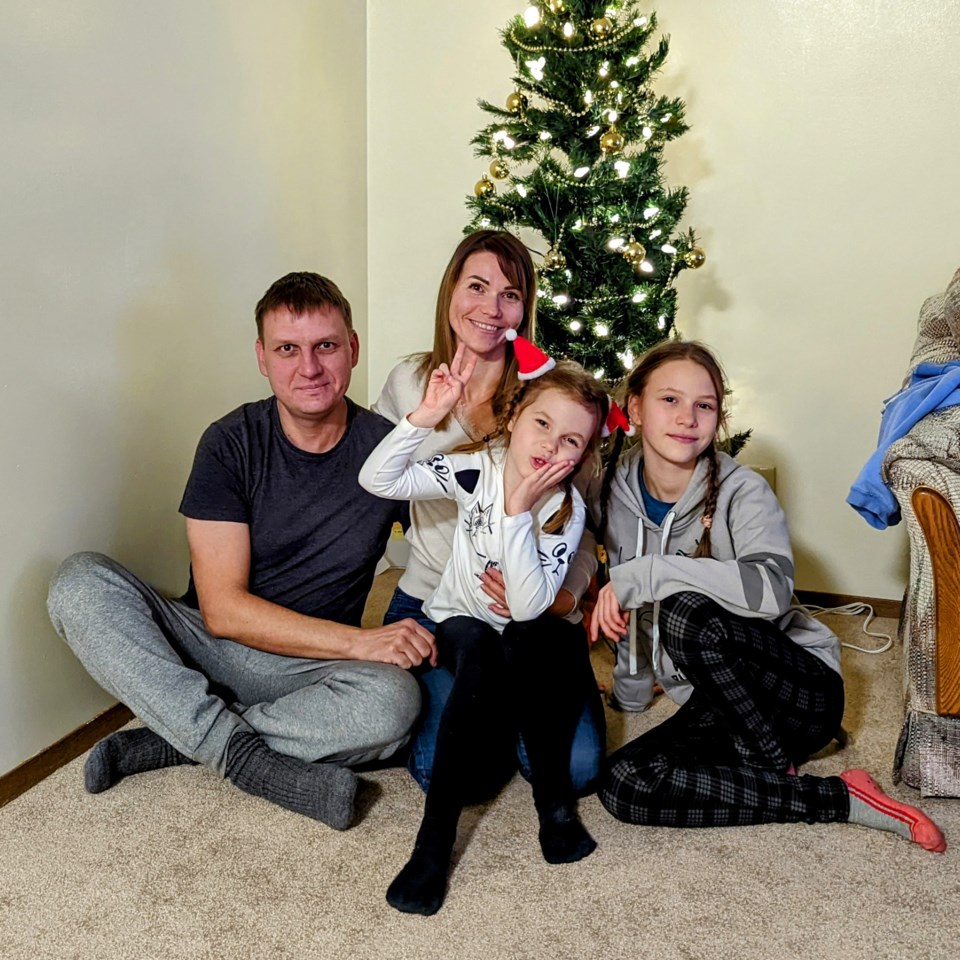Tears began streaming down Dar’ya Shyshko’s cheeks the moment she started to tell the story of the Russian occupation of her hometown of Kherson, a city of nearly 300,000 on the Dnipro River that came under attack in the first days of the war.
Shyshko, 39, and her family were happy in Kherson. Our lives were so good, she said mournfully, recalling a vacation to neighbouring Georgia before the war, and summers spent on the beaches of the Black Sea. Her husband Sergei, 42, made good money selling apartments on behalf of a local construction company, and her daughters — Masha, 11, and Milana, 5 — enjoyed school and friends. Shyshko herself worked as a nurse and as a teacher and tutor of English and Latin.
“We never planned to move anywhere. We were happy there. … They destroyed our lives,” she said. “People who have never experienced that, they can never imagine what we have been through. Never. I’ve never been so scared in my life. That fear took me over.”
Shyshko didn’t believe the war would happen. Not many people did, she said. When Russia began its invasion on 24 February, her husband woke her up and said, It’s war.
“For us, it was kind of like, all of a sudden, you know? We didn’t know what to do. I was in a panic, just (pacing). The girls were still sleeping, it was six o’clock in the morning. We didn’t know what to do, so we decided to stay.
“My sister phoned me and said they had left for western Ukraine. Because Russia, they were invading from the north, from the east, and from the south. The only part they couldn’t invade from was the west, because it borders with Poland.”
There were hundreds of kilometres of cars on the roads, bumper to bumper with people fleeing the oncoming violence. Shyshko’s sister and her family spent two days in their car before being able to stop.
Meanwhile, in Kherson, the Russians began fighting to control the Antonovskiy Bridge — one of the main crossings of the Dnipro, and a key route from occupied Crimea north through the city of Mykolaiv and into Ukraine.
“They started fighting there, and lots of people died over there,” Shyshko said. She paused to collect herself as she remembered that initial defense of Kherson.
“Higher up people from the police and the (Security Service of Ukraine, or SBU), they betrayed us. That bridge originally was mined, but they demined it.”
Shyshko said that the bridge was supposed to be destroyed, but Russian sympathizers in the local police and SBU allowed the Russians across. When they finally did, many young men of Kherson rallied to defend their homes.
That was March 1, 2022.
Without proper weapons or training, wielding mostly improvised gasoline bottle bombs, or molotovs, these young men were slaughtered by the invading Russians.
“The Russians came with huge tanks, against these young guys,” Shyshko said, crying. “There was like, half a body there, a head there. The Russians, they didn’t let us bury them. They left them for a week there, for everyone to see.”
Hundreds of bodies, mostly in unrecognizable pieces, were left on the streets radiating out from the bridge. Most of the city lives in high-rise apartment buildings, giving the population a clear view of the events below. Residents came down afterwards to try and collect the pieces and bury them, but Russian soldiers prevented them.
There is a park near the bridge, where the young men of Kherson gathered. Locals call it Violet Park now, and hope to build a monument. Shyshko said that when the Russians crossed the bridge and the makeshift defenders began to run, they ran to this park to draw fire.
“There were so many bodies in that park,” she said. “They were really motivated to protect their mothers, and their sisters. … The Russians were coming, and they didn’t want to run to the residential places, because they were shooting. So, they went into the park.”
The Russians used heavy, vehicle-mounted machine guns to mow down the survivors.
“The trees were all broken,” Shyshko described, “and there were no full bodies there. … I will never forget that day.”
Thus began the Russian occupation of Kherson, which lasted three months for the Shyshko family before they managed to escape, fleeing first to Odesa, then to Poland, and finally to Canada.
[This is the first part of a three-part story, from an interview with Dar’ya Shyshko. The second article covers the three months that the Shyshko family lived under Russian occupation, and the third tells the story of their arrival in Moose Jaw — and the welcome they’ve received here.]




